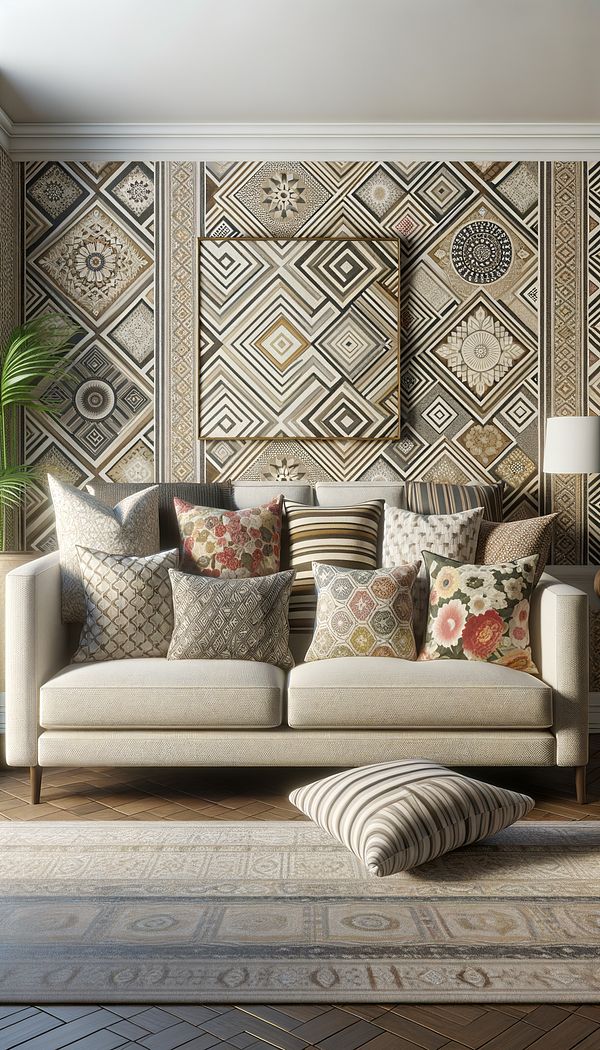What is Pattern?
Pattern refers to the repeating of a decorative design.
Description
In the realm of interior design, a pattern is a repetition of a specific design or sequence of shapes in a decorative manner across a surface. This can include anything from simple geometric shapes to complex illustrations that repeat in a predictable manner. Patterns are an essential element in design as they add visual interest, depth, and personality to a space. They can be found on a variety of surfaces including wallpapers, fabrics, tiles, and flooring, among others.
Patterns can range from subtle to bold, allowing for customization according to personal taste and the overall design style of the space. Incorporating patterns effectively requires a thoughtful balance with other design elements such as color, texture, and scale to ensure harmony within the space. For instance, a large-scale pattern might be used as a statement piece in a room, while smaller patterns can be mixed and layered to create depth and complexity.
The choice of pattern can significantly influence the mood and atmosphere of a room. For example, floral patterns can convey a soft, romantic feel, while geometric patterns might offer a more modern and structured vibe. Understanding the impact of different types of patterns and how they interact with other elements in a room is key to creating visually appealing and cohesive interiors.
Usage
Patterns are used in various applications within interior design. For example, a bold, geometric pattern may be applied through wallpaper in a living room to create a focal point, while a delicate floral pattern on upholstery might enhance the soft, feminine ambiance in a bedroom. In kitchens and bathrooms, patterned tiles can add character and dimension to the spaces. Moreover, in textiles, patterns play a crucial role, with items like curtains, rugs, and throw pillows offering opportunities to introduce texture, color, and pattern into a room.
FAQs
-
How do you mix patterns in a room?
Mixing patterns in a room involves balancing scale, color, and style. Start with a large-scale pattern as your focal point, then add medium and small-scale patterns that share a similar color palette. Ensure there's enough visual separation through solid colors or negative space to avoid a cluttered look.
-
Can patterns be used in minimalist design?
Yes, patterns can be incorporated into minimalist design, typically through subtle, monochromatic patterns that add interest without overwhelming the space. The key is to keep the design simple and not let the pattern dominate the room's overall aesthetic.
-
Are certain patterns associated with specific design styles?
Yes, certain patterns are often associated with specific design styles. For example, herringbone and chevron patterns are common in modern and contemporary designs, floral and damask patterns are characteristic of traditional and romantic styles, and ikat and tribal patterns often appear in bohemian and eclectic interiors.
Practical Application
Incorporating patterns into your interior design can transform a room from bland to visually stimulating. Start by choosing a pattern that complements the room's aesthetics and desired mood. Consider scale and placement carefully, and balance patterned elements with solid colors and textures to achieve a cohesive look. Remember, the use of patterns is not just limited to soft furnishings; think outside the box with patterned wallpapers, tiles, or even painted furniture.
-
Materials & Textiles360 articles
-
Color & Patterns154 articles
-
Wall Treatments & Finishes157 articles
-
Floor Coverings & Rugs7 articles
-
Decorating Principles & Elements330 articles
-
Cast Iron FurnitureCast iron furniture refers to items of furniture made primarily from cast iron, a type of iron that has been melted, poured into molds, and allowed to solidify.
-
American FrontierAmerican Frontier refers to a style of interior design inspired by the American West.
-
MonochromaticMonochromatic refers to a color scheme that uses only one color.
-
ClusterCluster refers to a group of objects or elements intentionally placed together to form a cohesive arrangement.
-
FauxFaux refers to artificial or imitation materials and finishes designed to mimic the appearance of natural or more expensive materials.
